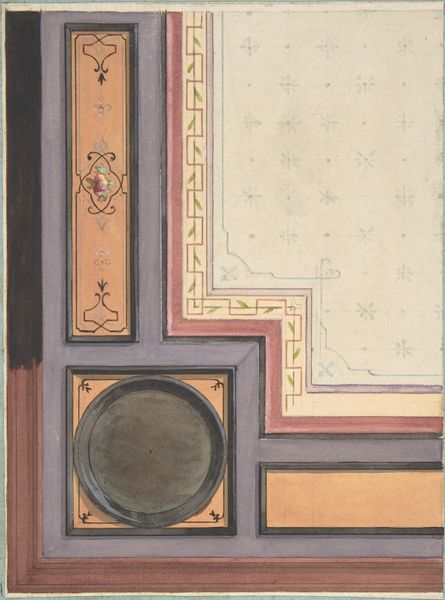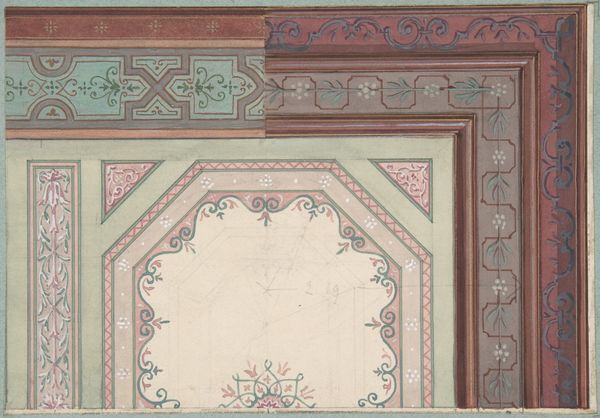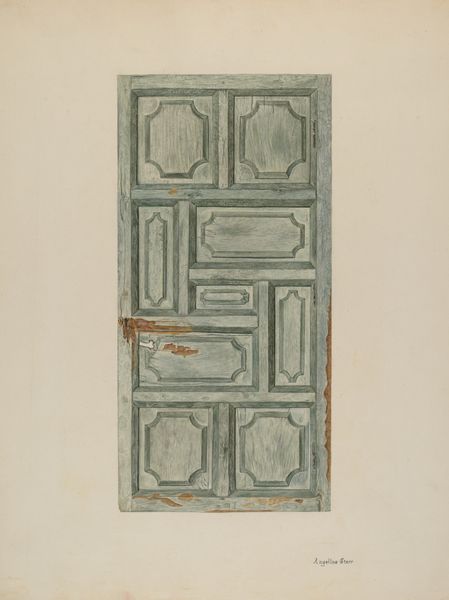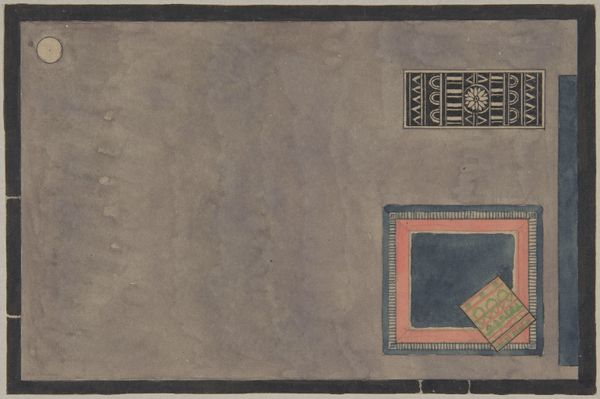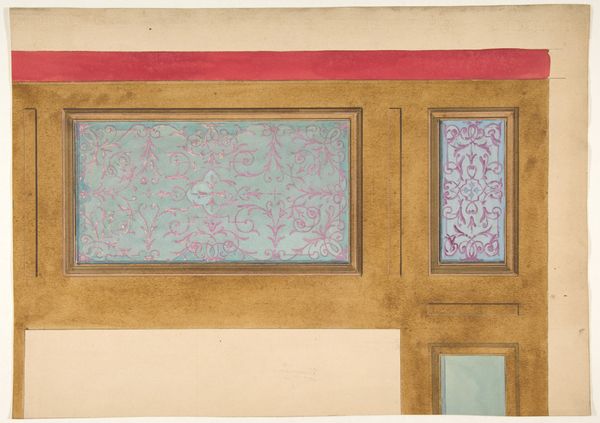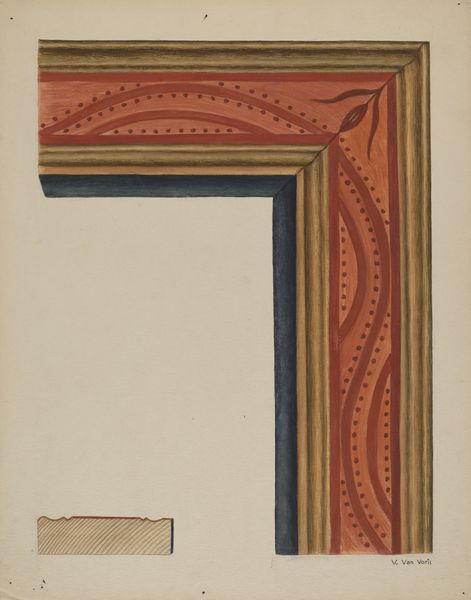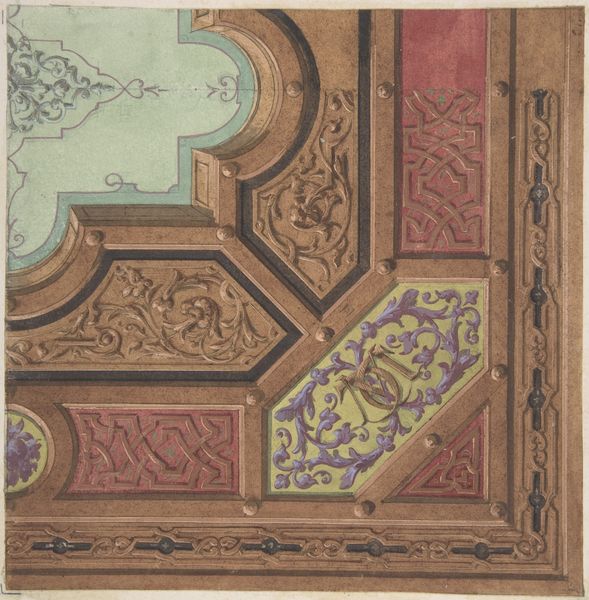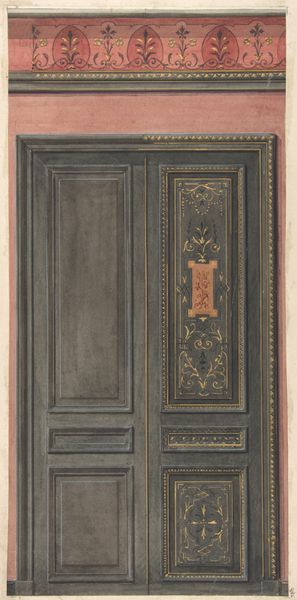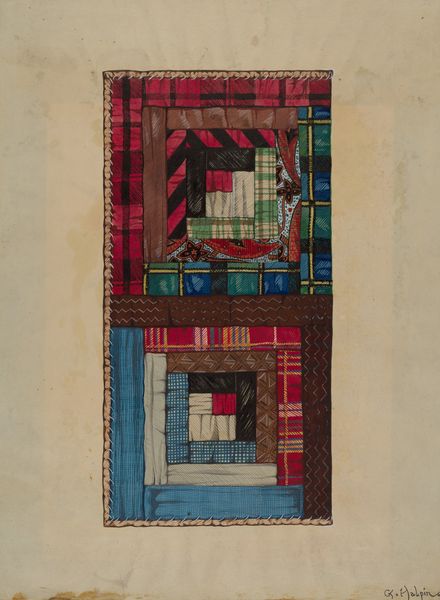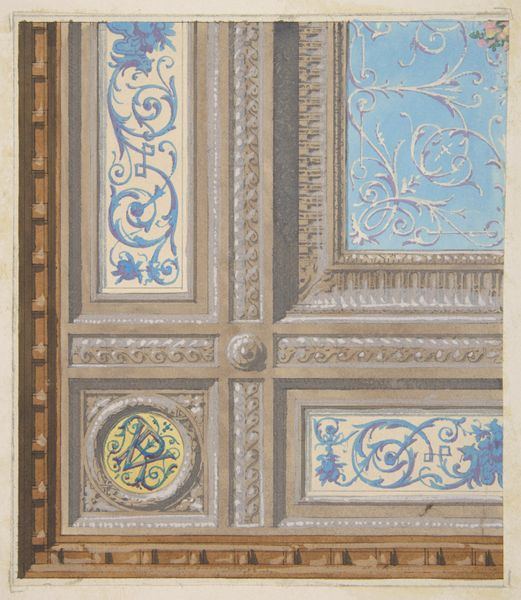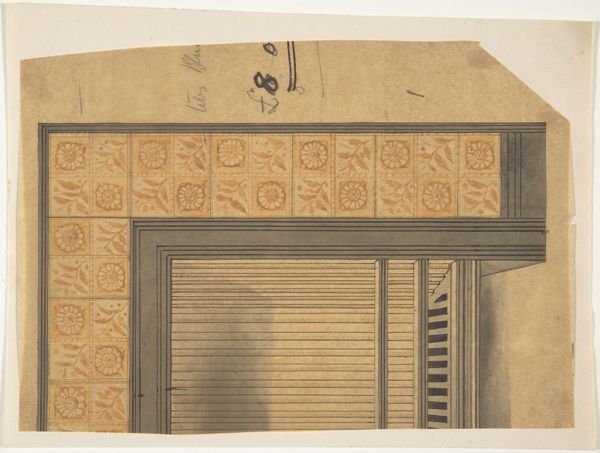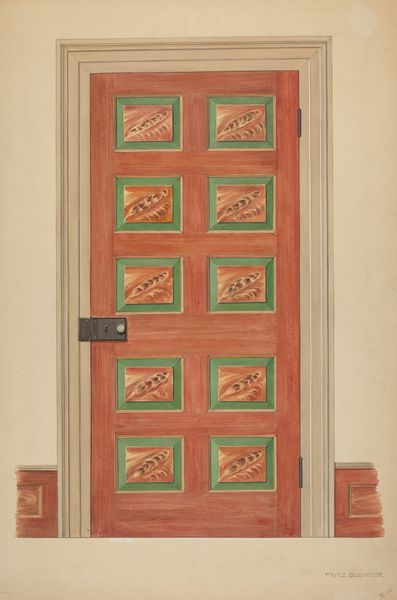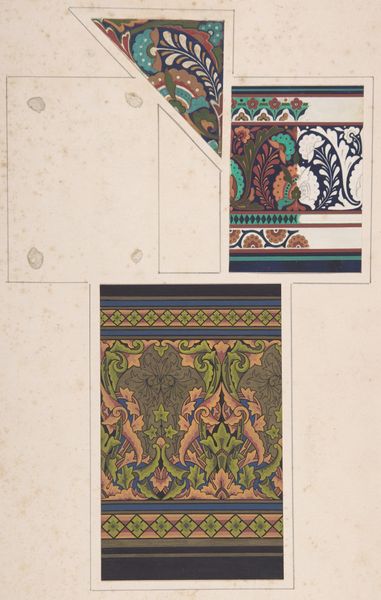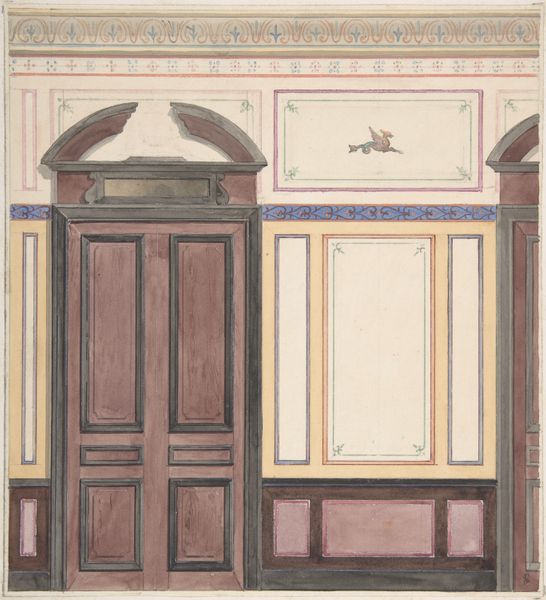
Design for the painted decoration in the Chinese style for the stairway of the house offered by the Empress to the duc de Mouchy on the occasion of his marriage 1850 - 1900
0:00
0:00
drawing, print, watercolor
#
drawing
# print
#
asian-art
#
watercolor
#
decorative-art
#
watercolor
Dimensions: Overall: 19 5/16 x 13 7/16 in. (49 x 34.1 cm) image: 16 3/4 x 9 1/2 in. (42.5 x 24.2 cm)
Copyright: Public Domain
Jules-Edmond-Charles Lachaise made this design for painted decoration using graphite, pen and brown ink, watercolor, and gouache. It was intended for the stairway of a house offered by the Empress to the duc de Mouchy, probably sometime in the mid-19th century. The image presents an interesting example of chinoiserie, the Western interpretation and imitation of Chinese artistic traditions. During this period, Chinese motifs became fashionable in European aristocratic circles. The design incorporates a series of panels with geometric patterns and stylized foliage, mimicking elements found in traditional Chinese screens and lacquerware. Given the historical context, this design speaks to the complex dynamics of cultural exchange and power. The Empress’s gift, decorated in this style, suggests an embrace of exoticism and luxury, reflecting the social and economic structures of the time. To fully understand this artwork, one might explore records of French aristocratic taste, accounts of diplomatic exchanges with China, and studies of interior design during the Second Empire. These resources help us appreciate how art is always contingent on social and institutional frameworks.
Comments
No comments
Be the first to comment and join the conversation on the ultimate creative platform.
